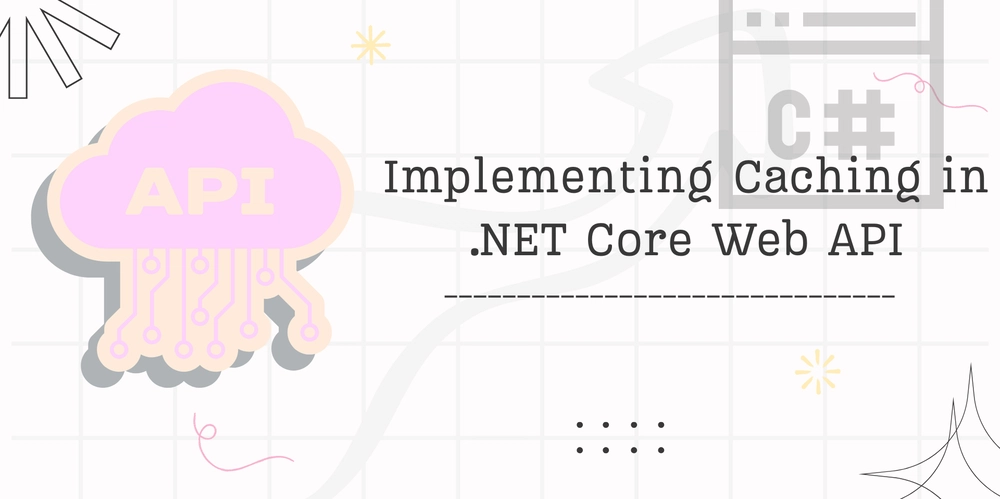Caching is one of the most effective ways to improve the performance and scalability of your APIs. By storing frequently requested data, you can reduce database load, speed up response times, and handle higher traffic without degrading performance.
In this article, we’ll explore memory caching, response caching, and distributed caching in .NET Core Web API with practical examples.
1. Response Caching
Response caching allows responses from your API to be stored and reused for a specified duration.
Setup in Program.cs
var builder = WebApplication.CreateBuilder(args);
builder.Services.AddControllers();
builder.Services.AddResponseCaching();
var app = builder.Build();
app.UseResponseCaching();
app.MapControllers();
app.Run();
Using Response Caching in Controller
[ApiController]
[Route("api/[controller]")]
public class ProductsController : ControllerBase
{
[HttpGet]
[ResponseCache(Duration = 60, Location = ResponseCacheLocation.Client)]
public IActionResult Get()
{
var products = new[] { "Product 1", "Product 2" };
return Ok(products);
}
}
✅ The API response will be cached for 60 seconds on the client.
2. In-Memory Caching
In-memory caching stores data in the server’s memory.
Setup in Program.cs
builder.Services.AddMemoryCache();
Using In-Memory Cache in Controller
[ApiController]
[Route("api/[controller]")]
public class OrdersController : ControllerBase
{
private readonly IMemoryCache _cache;
public OrdersController(IMemoryCache cache)
{
_cache = cache;
}
[HttpGet]
public IActionResult GetOrders()
{
const string cacheKey = "orders_list";
if (!_cache.TryGetValue(cacheKey, out string[] orders))
{
// Simulate fetching from database
orders = new[] { "Order 1", "Order 2" };
var cacheOptions = new MemoryCacheEntryOptions
{
AbsoluteExpirationRelativeToNow = TimeSpan.FromMinutes(5),
SlidingExpiration = TimeSpan.FromMinutes(2)
};
_cache.Set(cacheKey, orders, cacheOptions);
}
return Ok(orders);
}
}
✅ Reduces repeated database calls for frequently accessed data.
3. Distributed Caching
Distributed caching stores cache outside of the application, suitable for multi-server environments.
Setup with Redis
dotnet add package Microsoft.Extensions.Caching.StackExchangeRedis
builder.Services.AddStackExchangeRedisCache(options =>
{
options.Configuration = "localhost:6379";
options.InstanceName = "MyApp_";
});
Using Distributed Cache in Controller
[ApiController]
[Route("api/[controller]")]
public class CustomersController : ControllerBase
{
private readonly IDistributedCache _cache;
public CustomersController(IDistributedCache cache)
{
_cache = cache;
}
[HttpGet]
public async Task<IActionResult> GetCustomers()
{
var cacheKey = "customers_list";
var cachedData = await _cache.GetStringAsync(cacheKey);
if (string.IsNullOrEmpty(cachedData))
{
var customers = new[] { "Customer 1", "Customer 2" };
cachedData = System.Text.Json.JsonSerializer.Serialize(customers);
var options = new DistributedCacheEntryOptions
{
AbsoluteExpirationRelativeToNow = TimeSpan.FromMinutes(10)
};
await _cache.SetStringAsync(cacheKey, cachedData, options);
}
var result = System.Text.Json.JsonSerializer.Deserialize<string[]>(cachedData);
return Ok(result);
}
}
✅ Works across multiple instances of your API in a load-balanced environment.
Wrapping Up
Caching is essential for improving API performance, scalability, and user experience. In .NET Core Web API, you have several options:
- Response Caching: For simple, client-side caching of responses.
- In-Memory Caching: Quick caching within a single server instance.
- Distributed Caching: Scalable caching across multiple servers (e.g., Redis).
By implementing caching appropriately, you can drastically reduce database load and improve response times for your users.



